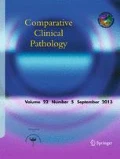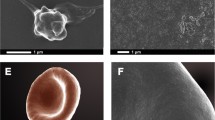Abstract
The bite of the North American leech Macrobdella decora results in much less prolonged bleeding in fish (8 min; control = 1 min) and amphibians (11.5 min; control = 1.5 min) than in mammals (humans) (73 min; control = 6 min). Coagulation of blood flowing from leech bite wounds is initially prolonged in frogs (4.3 min; control = 2 min) and humans (5.8 min; control = 2.5 min), but gradually returns to normal during the first 10 min after the termination of feeding. Although duration of feeding is similar in fish (mean = 62 min), amphibian (mean = 79 min) and human (mean = 68 min) hosts, the gain in body weight of leeches feeding on fish (mean = 11%) and amphibians (mean = 14%) is much less than those feeding on humans (mean = 58%). Bleeding in a frog heavily infected with the intrathrombocytic yeast Thrombocytozoons ranarum was abnormal from control incisions (>20 min) and from a leech bite wound (>140 min) suggesting impairment of thrombocyte function. This comparative approach to leech — host haematology offers a methodology into understanding the biological context in which the leech antithrombin (hirudin) evolved, as well as the evolution of vertebrate haemostatic mechanisms.
Similar content being viewed by others
References
Desser SS, Barta JR (1988) Ultrastructural observations on Thrombocytozoons ranarum Tchacarof 1963, an intrathrombocytic yeast of frogs. Can J Microbiol 34:1096–1098
Hawkey C (1970) General summary and conclusions. Symp Zool Soc Lond 27:217–229
Munro R, Hechtel FOP, Sawyer RT (1989) Sustained bleeding after a leech bite in the apparent absence of hirudin. Thromb Haemost 61(3):366–369
Munro R, Sawyer RT, Siddall M, Desser SS (1991) Bleeding in human volunteers from the bite of the North American medicinal leech Macrobdella decora compared with its European counterpart Hirudo medicinalis. Comp Haematol Int 1:214–216
Rupp RS, Meyer MC (1954) Mortality among brook trout, Salvelinus fontinalis, resulting from attacks of freshwater leeches. Copelia 4:294–295
Sawyer RT (1972) North American freshwater leeches, exclusive of the Piscicolidae, with a key to all species. University of Illinois Press, Urbana, Illinois
Sawyer RT (1986) Leech biology and behaviour, Vol II. Oxford University Press, Oxford, p 450
Tchacarof E (1963) Parasitose elective intra-thrombocytaire chez la Rana ridibunda (Pall.) CR Acad Bulg Sci 16:845–848
Author information
Authors and Affiliations
Rights and permissions
About this article
Cite this article
Munro, R., Siddall, M., Desser, S.S. et al. The leech as a tool for studying comparative haematology. Comparative Haematology International 2, 75–78 (1992). https://doi.org/10.1007/BF00186263
Issue Date:
DOI: https://doi.org/10.1007/BF00186263




